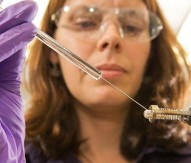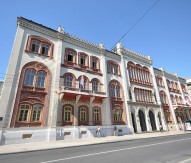
New wireless communication project launched
The IMDEA Networks Institute has launched a research project aiming to create a new communication paradigm for very high speed future wireless networks. The project – named ‘SEARCHLIGHT’ – intends to respond to the challenge posed by the massive growth of wireless internet traffic.
Dr Joerg Widmer, group leader for the wireless networking research line, is behind the project, which will lead to the advancement of wireless communication and the improvement of its scalability, ubiquity, and energy efficiency.
Widmer is the recipient of a €1.7m European Research Council Consolidator Grant. Over a five-year period, he will employ this funding to develop a novel communication architecture, allowing for the operation of very high speed wireless networks. This groundbreaking technology is meant to become a key enabler of mobile communications, leading towards the creation of a truly converged ICT infrastructure, providing connectivity anytime and anywhere.
Widmer explained that “the current scenario requires a radical rethinking of wireless networking”. State-of-the-art wireless communication already operates close to maximum capacity and the only viable option to further increase data rates is to increase the communication bandwidth. Thus, SEARCHLIGHT is intended to develop wireless technologies in high frequency bands, such as the unlicensed 60GHz band.
“We propose to design and build a wireless network architecture that is a key element for the scalability of future wireless communications,” said Widmer. “In analogy to the evolution of wired Ethernet from a shared medium to a fully switched network, we envision that future wireless networks will consist of many highly directional LOS (line-of-sight) channels for communication between access points (APs) and end devices.”
SEARCHLIGHT is aligned with the IMDEA Networks’ leading role in European research on mobile communications and, particularly, in the development of 5G. This role is exemplified by the Institute’s membership of the 5G Infrastructure Association, a legal entity created by the European Commission and aiming to accelerate work on 5G networks with the year 2020 in sight. This partnership initiative will lead the seven-year long European effort to produce and influence international standards for next generation cellular networks, laying out an ambitious research agenda.




